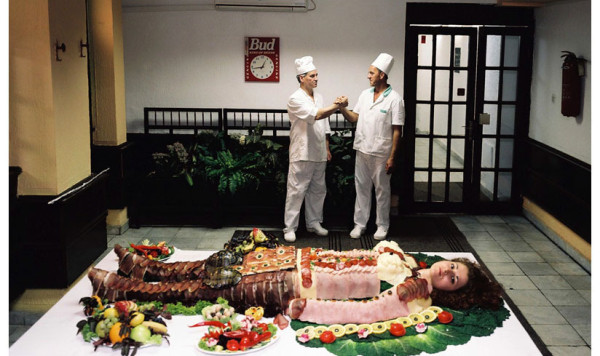斯洛伐克前身為捷克斯洛伐克,1989年「絲絨革命」爆發,社會主義體制於隔年瓦解,於1993年和平獨立為捷克與斯洛伐克。變動的過去積累複合為今日現實,創作者以各自的方法予以回應。
彼得.克雷克斯帶著幽默感及好奇心走入現場,與被攝者共創重演生命故事。縱使命題龐大如政局戰事,也能從口述回憶溫柔地以小見大,或以表演行動嘲諷時局。
維拉.恰卡紐娃則擅於融合不同類型的表現手法,早期作品混合紀實虛構,呈現後共產時代的常民狀態;近年「後人類三部曲」反思氣候危機,也對文明科技、國籍政體進行思辨。影像語言持續翻新,始終關注的是個人記憶和影像載體如何記錄、保存或變造過去。
透過並列同具代表性卻大相逕庭的風格作者,本專題試圖在國族影像編年史之外另闢蹊徑,呈現轉化所謂國家現實的多重可能。
TIDF專文|記憶不只雙面:焦點影人彼得.克雷克斯及維拉.恰卡紐娃

Filmmakers in Focus | Double Angles from Slovakia: Peter KEREKES & Viera ČÁKANYOVÁ
Slovakia became an independent state after the peaceful dissolution of Czechoslovakia in 1993. Each in their own way, filmmakers explore and respond to their past and present. This programme features two prominent Slovak auteurs, who are equally representative but differ largely in style.
With a sense of humour and curiosity, Peter Kerekes places himself in the situations of his subjects. He co-creates and re-enacts life stories with them through detailed observation and open dialogues. Even with heavy topics like political turmoil or war, the big picture is subtly conveyed in the recounted memories or performances in his boundary-breaking films. Viera Čákanyová's early works combine different genres and styles, representing the state of ordinary people in the post-communist era. The more recent 'Post-Human Trilogy' reflects on the climate crisis, examining civilisation and technology. With a continually evolving film language, her works consistently explore how the past is recorded, preserved, or even fabricated through personal memory or visual media.
In an attempt to open a new path beyond the chronology of national cinema, the juxtaposition of these two esteemed auteurs with different approaches aims to delve into the multifaceted aspects and possibilities of exploring the so-called national reality.
TIDF Article|MORE THAN TWO SIDES TO EACH MEMORY: PETER KEREKES and VIERA ČÁKANYOVÁ













